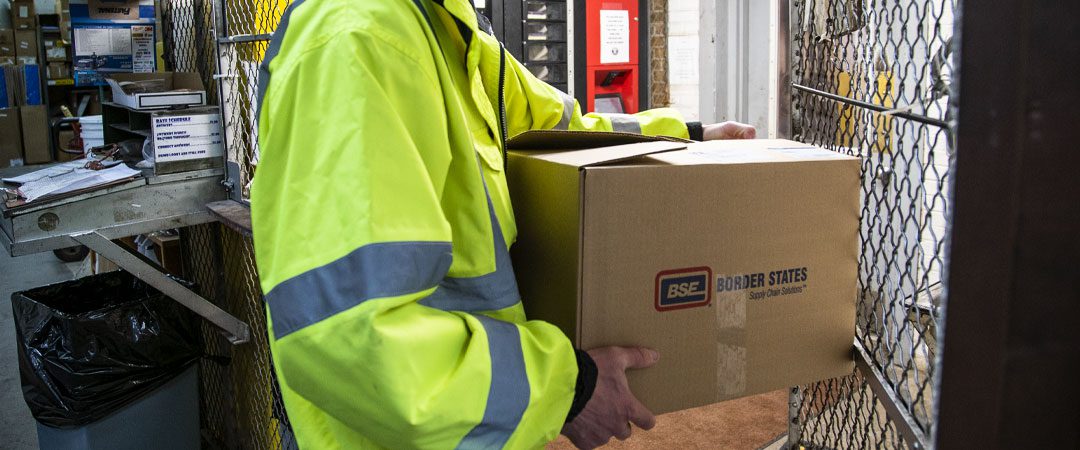
Ergonomics is an important element to consider in every industry, whether this means having the appropriate office equipment to support a comfortable desk job or implementing safe lifting principles in a warehouse. According to OSHA, “Ergonomics — fitting a job to a person — helps lessen muscle fatigue, increases productivity and reduces the number and severity of work-related [musculoskeletal disorders].”
When considering ergonomics and health in the workplace, the act of lifting material can pose as a threat to any demographic, especially when select workers are consistently lifting significant amounts of weight. Use the following tips as a guide to practice safe lifting principles and avoid unnecessary injuries on the job.
Why is safe lifting important?
Every year, improper lifting techniques leave over one million workers with acute or chronic back problems (e.g., muscle strains, ligament sprains and disk herniations), making these impairments the number one occupational injury nationwide. Improper lifting techniques can include lifting material that is too heavy, adding resistance to a task without training or failing to stretch before a movement-heavy workday.
Remember, it can take something as minor as a missed step in your lifting technique to cause lifelong pain or discomfort.
Safe lifting tips
Keep these injury prevention techniques at the forefront of your mind any time you’re expected to perform strenuous tasks:
1. Stretch
When the body is not warmed up or muscles are not stretched prior to being physically active, shortened muscles can misalign the spine and cause long-term back pain or discomfort. Take a few minutes before partaking in any physical activity, especially lifting, to stretch and prepare your muscles for incoming stressors.
2. Strengthen
Strength training can have long-lasting benefits on posture, stability and lower-back resiliency. Building strength can also lower the risk of injury and the severity and prevalence of pain.
3. Use proper form
Keep your body in an aligned position when performing any task, so the spine is protected from the stresses of excessive lifting, moving or stretching. Here are some key points to keep in mind:
- Plan and practice.
- Planning will prevent awkward movements that cause injury. Use this time to create a game plan, clear a path, get assistance, etc.
- Keep your feet shoulder width apart, knees bent and back straight.
- Set a stable foundation for your lifting motions and remember to keep your back as straight as possible for stability, comfort and safety.
- Tighten the abdominal muscles.
- Tightening your core will support the spine and prevent excess stress on the back.
- Lift with your legs, not your back.
- Legs hold much more strength and dense muscle than the back. Raise and lower yourself by bending at the knees, not your back.
- Lift material close to the body.
- Lifting material close to the body allows for more stability and less stress on the muscles. Keep a firm grip on the material you are handling and keep it balanced and close to the body.
- Don’t be afraid to ask for help.
- If you find yourself straining to lift or carry material, reassess the situation and find someone who is willing and able to assist you.
- Don’t forget about repetitive movements.
- While it’s critical to implement safe lifting principles to occupations where heavy-lifting is involved, it’s equally as important to consider these principles in occupations where long-term, repetitive motions are executed, including bending at the waist, kneeling and turning one’s head.
Additional resources
The National Institute for Occupational Safety and Health (NIOSH) Lifting Equation is an assessment tool that is commonly used to calculate the recommended weight limit for lifting and lowering activities. This tool also serves as a great reminder to consider the variables involved with safely handling heavy materials (e.g., horizontal location, lifting frequency, carrying distance, etc.).
Refer to the NLE Calc app to evaluate lifting tasks and reduce the possibility of injury.
Take your time
It’s easy to skip the above techniques and work at a rapid pace; however, this is a recipe for long-term pain, discomfort and frustration. When performing any strenuous, physical activity, take your time — not only will it spare you the injuries, but it will prevent the risk of a hospital visit and lasting disability.
Read more
67 Toolbox Talk Topics: Critical Safety Shares to Emphasize with Your Team
What the Five Types of Safety Controls Look Like in Practice